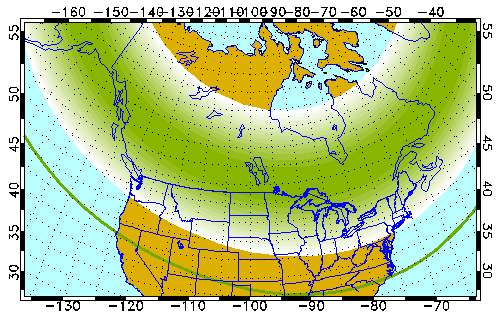Northern lights could light up Utah’s night sky this week

SALT LAKE CITY (ABC4) — Utahns could be delighted with a night-time spectacle as the northern lights, or aurora borealis, may make a rare appearance along the Wasatch Front, as long as clouds don’t get in the way.
According to forecasts from the University of Alaska Geophysical Institute, auroral activity will be extra high on Friday night, Dec. 1. Because of the increase in solar activity, the northern lights will stretch overhead across Canada, and down into 22 of the contiguous United States.

While Utah isn’t one of those states where the lights will be seen directly overhead, the Geophysical Institute indicated the lights may be seen on the lower horizon.
Unfortunately for Utahns, a gorgeous view of the aurora borealis might be disrupted by an incoming storm. Cloud coverage has been building across the Beehive State since Tuesday evening as a storm clips southern Utah and another storm from the Pacific Northwest moves into the Wasatch Front.
Thanks for signing up!
Watch for us in your inbox.
Subscribe Now
ABC4 Breaking News Alerts
ABC4’s 4Warn Weather Team said the second storm will impact Utah starting on Friday, bringing snow showers and – of course – plenty of cloud coverage. That storm is expected to be through the weekend, meaning there is little chance for a break to catch sight of the northern lights.
Should there be a break in the storm, however, keep your eyes on the sky and maybe keep a camera on hand. Just like the spectacular northern lights display in April earlier this year, if the lights are visible, they may be hard to see with the naked eye but easy to see through a DSLR camera.
The aurora borealis rarely makes a strong appearance in Utah. In April, NASA Ambassador to Utah Patrick Wiggins explained to ABC4 that Utah typically gets a couple of displays a year but they are usually “kind of so-so-ish.”
An aurora borealis appearance when the sun “burps” – or for a more technical term, the sun emits a Coronal Mass Ejection (CME) which hits the Earth’s atmosphere. The energy from the “burp” is usually pulled north or south thanks to Earth’s magnetic poles. On occasion, the burp can be just strong enough to resist that pull and make a surprise appearance farther south than usual.
For the latest news, weather, sports, and streaming video, head to ABC4 Utah.

